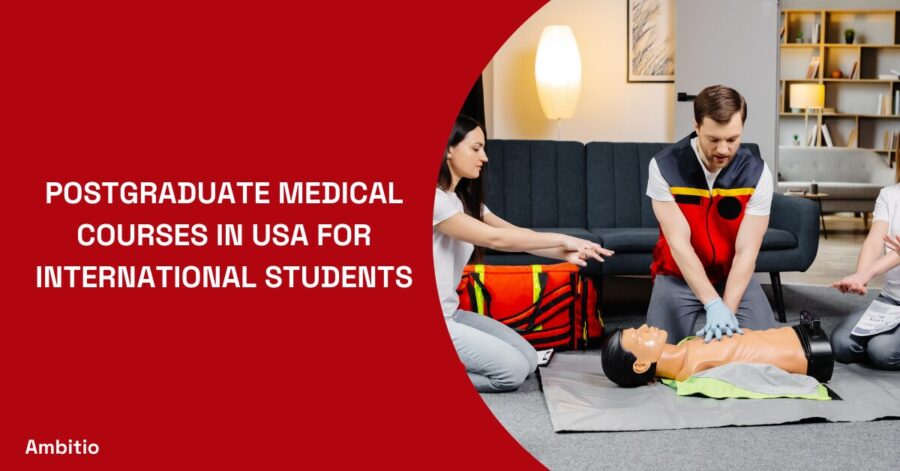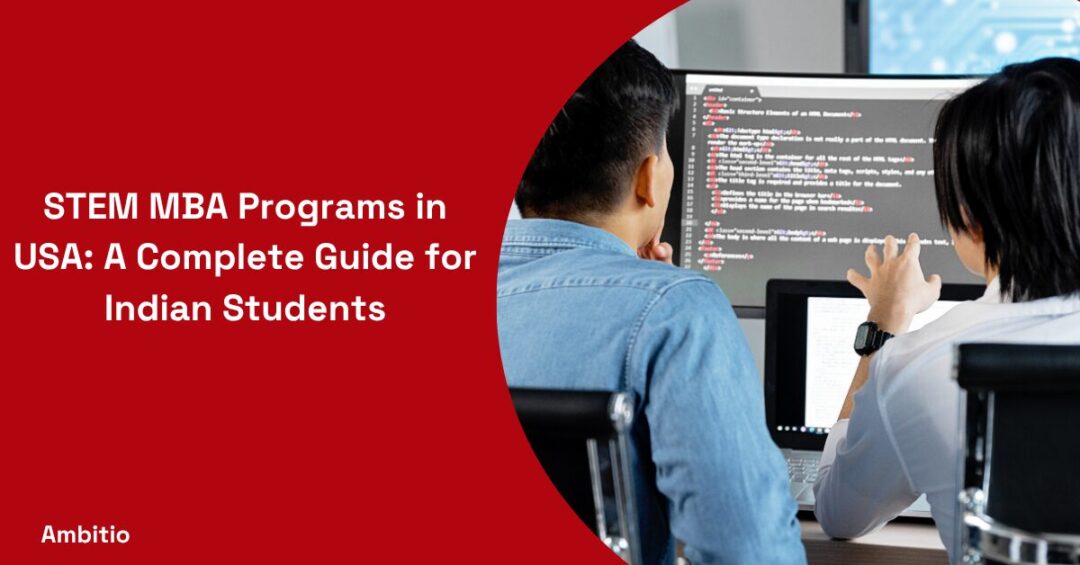14 December 2024
6 minutes read
Postgraduate Medical Courses in the USA for International Students: A Pathway to Advanced Healthcare Careers

The pursuit of a medical degree in the United States is a coveted goal for many international students. The allure of advanced healthcare education, paired with the opportunity to engage with some of the world’s leading medical professionals, makes the USA a premier destination for postgraduate medicine.
In this comprehensive guide, we will explore the avenues, eligibility requirements, and academic richness offered by American institutions for aspiring international postgraduates in medicine.
Eligibility for Postgraduate Medicine in the USA: The Gateway for International Students
Understanding the Prerequisites
Before diving into the depths of postgraduate medicine in the USA, international students must familiarize themselves with the eligibility criteria. The foundational requirement is an undergraduate degree in medicine or a closely related healthcare field. This degree should ideally be equivalent to the pre-medical education in the USA.
Bridging the Qualification Gap
International qualifications may vary in structure and content from those in the United States. Prospective students must ensure that their undergraduate coursework aligns with the prerequisites of American postgraduate programs. This often involves supplementing one’s education with additional courses or gaining relevant clinical experience.
Tackling the MCAT: A Crucial Step
The Medical College Admission Test (MCAT) is a standardized examination that assesses problem-solving, critical thinking, and knowledge of natural, behavioral, and social science concepts.
A competitive MCAT score is not only a common requirement but also a testament to the candidate’s readiness for the demanding nature of postgraduate medical education.
Language Proficiency: Breaking the Barriers
Since English is the medium of instruction, non-native speakers must prove their proficiency through tests like the TOEFL or IELTS. Achieving high scores in these tests is imperative as it reflects one’s ability to communicate effectively in a fast-paced academic and clinical environment.
Top Universities in the USA for Postgraduate Medicine: The Seats of Excellence
Navigating Through 433 Institutions
The USA is home to a plethora of universities that specialize in medical education. These institutions are known for their robust curricula, research facilities, and clinical training. But with 433 universities to choose from, the selection process can be daunting.
Criteria for Selecting the Right University
When scouring through the list of top universities, international students should consider factors such as the university’s reputation, the structure of the postgraduate program, faculty expertise, research opportunities, and the availability of scholarships and financial aid.
The Role of Rankings and Accreditations
University rankings and accreditations can be insightful indicators of the quality of education provided. Accredited institutions meet rigorous standards set by medical education authorities, ensuring that the degree earned is recognized and valued.
The Spectrum of Specialties
Postgraduate medicine in the USA is not limited to an MD. Students can choose from a variety of specializations such as healthcare administration, pharmacology, health informatics, and many more. These programs may vary in duration and structure but are all aimed at advancing one’s expertise in specific areas of healthcare.
Tailoring Education to Career Goals
Selecting a specialization should align with the student’s career aspirations and interests. For example, those inclined towards management may opt for healthcare administration, while those fascinated by drug action might pursue pharmacology.
The Interdisciplinary Approach
Modern healthcare education in the USA emphasizes an interdisciplinary approach. This encourages the integration of knowledge from various fields, fostering a more comprehensive understanding of health and disease.
The Rigorous Road to an MD in the USA: A Comprehensive Overview
The Commitment to Medical Education
Obtaining a Doctor of Medicine (MD) degree in the United States is a journey that requires dedication and resilience. It is a pathway that demands not just intellectual capability but also emotional stamina to navigate the challenges of medical education.
The Four Stages of MD Education
The MD program typically encompasses two years of foundational medical sciences followed by two years of clinical rotations. This structure is designed to build a solid knowledge base while offering practical experience in a variety of medical specialties.
Clinical Experience: The Crux of Learning
Clinical rotations are a distinctive aspect of the MD program in the USA. They expose students to real-world medical settings, patient care, and the day-to-day responsibilities of healthcare professionals. This hands-on experience is vital for honing clinical skills and making informed specialization choices.
The Multifaceted Admission Process
Gaining admission into a postgraduate medical program in the USA is multifaceted. It involves not only meeting the eligibility criteria but also conveying one’s passion for medicine, dedication to patient care, and potential for contribution to the medical community.
The Importance of a Strong Application
A strong application showcases a candidate’s academic achievements, research experiences, extracurricular activities, and letters of recommendation. Personal statements and essays are particularly crucial as they provide insight into the applicant’s motivations and aspirations.
Navigating the Visa Landscape
International students must also navigate the complexities of obtaining a student visa. This entails proving financial stability, intent to return home after studies, and ties to one’s home country.
Financial Considerations: Scholarships and Tuition Fees
Embarking on a journey through postgraduate medical education in the USA is a significant financial undertaking. International students must prepare for the substantial tuition fees associated with advanced medical degrees. Understanding the costs and exploring financial support options are crucial steps in planning for a medical education in the United States.
The Real Cost of Studying Medicine in the USA
Tuition fees for medical courses in the USA vary widely between institutions and can range from $20,000 to over $60,000 per year. When you factor in additional costs such as books, medical supplies, insurance, living expenses, and potential travel back to one’s home country, the financial burden can become quite substantial.
The exact cost will depend on whether you choose a public or private institution, the state in which the university is located, and the specific medical program.
Public vs. Private Institutions
Public universities generally offer lower tuition rates for domestic students, but this benefit may not extend to international students. Private institutions, while typically more expensive, may have more resources available for scholarships and financial aid for international applicants.
State and Location Factors
The cost of living in the USA varies greatly depending on the location. For example, studying in New York City or San Francisco is likely to be significantly more expensive than in smaller cities or towns due to higher costs for housing, food, and transportation.
Navigating Scholarships and Financial Aid
Scholarships can dramatically reduce the financial burden of medical education. They are awarded based on a variety of factors including academic merit, financial need, or specific research interests. Some scholarships are specifically designed for international students and can cover a significant portion of tuition fees or even offer full rides.
Merit-Based Scholarships
Merit-based scholarships reward students for academic excellence, leadership qualities, and extracurricular achievements. Competition for these scholarships is fierce, and students must often exhibit exceptional academic records and test scores to qualify.
Need-Based Financial Aid
Need-based aid is granted according to the student’s financial situation. To apply, students must typically submit detailed financial information, and awards are given based on the student’s demonstrated financial need.
Program-Specific Scholarships
Some scholarships are available specifically for certain fields of study within medicine, such as oncology or pediatrics. These scholarships may be funded by professional organizations or private foundations and often require the student to commit to working in a specific field or research area after graduation.
Research Fellowships and Assistantships
Graduate research fellowships and assistantships provide students with the opportunity to work on research projects while studying. In return for their work, students receive a stipend and, in some cases, tuition reimbursement. These positions are competitive and usually require a separate application process.
Other Financial Support Options
Apart from scholarships and fellowships, there are other financial support options that international students can explore:
On-Campus Employment
International students on an F-1 visa are permitted to work on campus for up to 20 hours per week while school is in session. While this may not cover tuition fees, it can help with living expenses.
External Funding
Students may also seek funding from external sources such as governmental and non-governmental organizations in their home countries. Some countries offer loans, grants, or scholarships for students planning to study abroad, especially in fields like medicine which can benefit the community when the student returns.
Loan Programs
There are limited loan options available for international students without a U.S. cosigner, but certain financial institutions and universities offer international student loans. These loans typically have higher interest rates and stricter repayment terms, so it’s important to fully understand the loan agreement before committing.
Planning and Budgeting
Planning and budgeting are key to managing the financial aspect of postgraduate medical education. Prospective students should:
- Start researching scholarships and financial aid options early.
- Reach out to university financial aid offices for information on available support.
- Create a detailed budget that includes all potential expenses.
- Consider the long-term return on investment when evaluating the cost of education.
Preparing for the USMLE: The Key to Medical Licensure in the USA
The USMLE: A Three-Step Examination Process
The United States Medical Licensing Examination (USMLE) is a comprehensive test that assesses a doctor’s ability to apply knowledge, concepts, and principles crucial to practicing medicine. It is divided into three steps, each designed to evaluate different competencies.
Step 1 and Step 2: Building the Foundation
USMLE Step 1 tests the understanding of the sciences that provide a foundation for the safe and competent practice of medicine. Step 2 assesses the ability to apply medical knowledge and skills in a supervised clinical setting.
Step 3: Demonstrating Readiness for Independent Practice
USMLE Step 3 is the final examination in the USMLE sequence and is designed to assess whether a candidate can apply medical knowledge and understanding of biomedical and clinical sciences essential for unsupervised practice.
Conclusion
The path to postgraduate medicine in the USA for international students is challenging but rewarding. It is a journey that molds ambitious students into world-class healthcare professionals.
With diligence, dedication, and the willingness to immerse oneself in a rigorous educational endeavor, international students can achieve their dreams of becoming contributors to global healthcare excellence.
FAQs
Are there any English language requirements for postgraduate medical courses in the USA?
Yes, non-native English speakers must demonstrate proficiency through standardized tests like TOEFL or IELTS.
Is US clinical experience required for international medical graduates?
While not always mandatory, US clinical experience can be beneficial and is often recommended for international medical graduates seeking residency in the USA.
How can I find out which postgraduate medical courses in the USA are right for me?
Researching universities, evaluating program structures, and considering career goals are essential steps. Utilizing course matcher tools and consulting with academic advisors can also aid in the decision-making process.

You can study at top universities worldwide!
Get expert tips and tricks to get into top universities with a free expert session.
Book Your Free 30-Minute Session Now! Book a call now




























